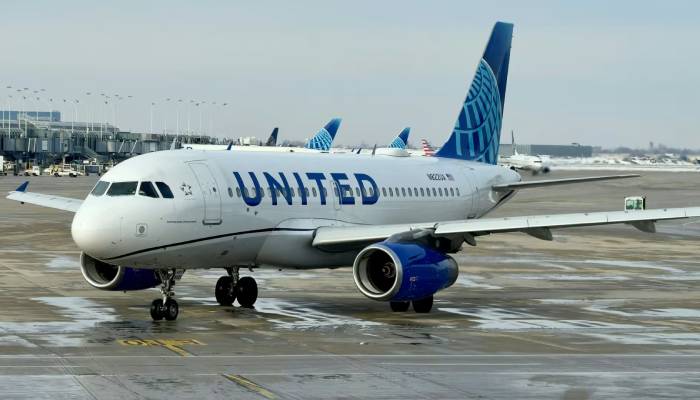
united airlines flight ua770 emergency diversion
Introduction
The phrase “United Airlines Flight UA770 Emergency Diversion” has emerged as a highly searched aviation topic in 2025. This flight faced unexpected technical alerts, showcasing the vital role of aviation safety protocols, crew professionalism, and the need to reassure passengers. Unlike catastrophic incidents, the United Airlines Flight UA770 Emergency Diversion illustrates how aviation systems prioritize passenger safety, even requiring mid-air course changes.
This review delves into the details of the United Airlines Flight UA770 Emergency Diversion, including the sequence of events, passenger experiences, technical factors, regulatory oversight, and the broader implications for air travel.
What Happened on United Airlines Flight UA770?
The United Airlines Flight UA770 Emergency Diversion involves two notable incidents from 2025 that garnered worldwide attention:
1. On August 14, 2025, a Boeing 737 MAX 9 flying from Los Angeles (LAX) to Chicago (ORD) had to divert to Denver (DEN) because of alerts from its cockpit sensors.
2. On May 27, 2025, a Boeing 787-9 Dreamliner traveling from Barcelona to Chicago diverted to London Heathrow (LHR) due to a pressurization issue.
Both incidents were reported under the title “United Airlines Flight UA770 Emergency Diversion,” which quickly circulated across various media outlets and social media platforms.
Incident One: August 14, 2025 — LAX to ORD
United Airlines Flight UA770, a Boeing 737 MAX 9, experienced an emergency diversion in 2025 shortly after reaching cruising altitude. Cockpit sensors detected an issue, prompting the flight crew to divert to Denver International Airport as a safety measure.
Passengers later shared that while the situation was initially unsettling, they appreciated the captain’s clear and calm communication throughout the process. The aircraft landed safely in Denver at around 8:20 PM, where emergency responders were prepared and waiting.
United Airlines later confirmed that the diversion was precautionary, and all passengers were rebooked on flights to Chicago.
Incident Two: May 27, 2025 — Barcelona to Chicago
Earlier in the year, another United Airlines Flight UA770 Emergency Diversion occurred, this time involving a Boeing 787-9 Dreamliner. Midway across Europe, the flight experienced a cabin pressurization anomaly.
The crew immediately declared “Squawk 7700,” the universal code for an emergency, and executed a United Airlines Flight UA770 Emergency Diversion to London Heathrow Airport. Despite the technical scare, passengers reported calm handling, with no oxygen mask deployment required.
The United Airlines Flight UA770 Emergency Diversion to London served as a reminder of the strict precautionary measures embedded in long-haul flight operations.
Passenger Experience During the Diversion
Passenger testimonies reveal that the United Airlines Flight UA770 Emergency Diversion was handled with professionalism:
-
Families said flight attendants were attentive and reassuring.
-
Business travelers appreciated timely communication from the cockpit.
-
Social media captured the atmosphere, with hashtags like #UA770 and #FlightDiversion trending after the event.
The shared sentiment was relief that the United Airlines Flight UA770 Emergency Diversion ended safely with no injuries.
Technical and Safety Considerations
The United Airlines Flight UA770 Emergency Diversion incidents underscore aviation’s focus on redundancy and precaution:
-
737 MAX 9 — Known for advanced sensors and redundancy systems, the aircraft responded to cockpit alerts exactly as designed, prompting the Flight UA770 Emergency Diversion.
-
787 Dreamliner — Featuring state-of-the-art pressurization systems, the aircraft required immediate diversion once an anomaly was detected, leading to the United Airlines Flight UA770 Emergency Diversion to Heathrow.
In both cases, systems worked as intended: detect an issue, alert the crew, and prompt a diversion.
Regulatory Oversight After the Diversion
Following any United Airlines Flight UA770 Emergency Diversion, the FAA and NTSB require reports and maintenance checks. While not every diversion prompts a full investigation, both incidents ensured:
-
Aircraft underwent technical inspections.
-
Reports were submitted to regulatory agencies.
-
Findings contributed to aviation safety databases.
Thus, the United Airlines Flight UA770 Emergency Diversion serves not only as a precautionary action but also as a learning opportunity for the wider aviation industry.

Why Diversions Like UA770 Matter
Every United Airlines Flight UA770 Emergency Diversion reinforces three aviation principles:
-
Safety First — No potential risk is ignored.
-
Prepared Crews — Training ensures diversions are handled calmly.
-
Passenger Assurance — Clear communication prevents panic.
The Flight UA770 Emergency Diversion is proof that aviation safety systems are designed to prioritize life above schedule.
The Role of Communication
The success of the United Airlines Flight UA770 Emergency Diversion was not just technical, but also psychological. Passengers emphasized how important it was to hear calm explanations from the captain and flight attendants.
Without steady communication, the United Airlines Flight UA770 Emergency Diversion might have escalated into confusion or panic. Instead, it became an example of trust between airline staff and passengers.
Social Media and Public Perception
In today’s digital age, the United Airlines Flight UA770 Emergency Diversion spread across social media platforms within minutes. Passengers shared live updates, videos, and images, amplifying public awareness.
This highlights how every United Airlines Flight UA770 Emergency Diversion not only tests aviation protocols but also shapes public perception of airline reliability.
Lessons Learned from UA770
The dual United Airlines Flight UA770 Emergency Diversion events of 2025 provide several lessons:
-
Airlines must continue investing in predictive maintenance.
-
Transparent communication should remain a cornerstone of emergency response.
-
Passengers should understand that diversions are not failures, but signs of safety systems working.
By treating the United Airlines Flight UA770 Emergency Diversion as a case study, the industry gains insights that reinforce aviation’s reputation as the safest mode of travel.
Historical Context of Diversions in Commercial Aviation
The United Airlines Flight UA770 Emergency Diversion of 2025 did not happen in isolation. Aviation history is filled with examples of precautionary diversions, many of which never make headlines. Diversions occur for reasons such as:
-
Weather conditions — thunderstorms, turbulence, or unexpected fog.
-
Technical anomalies — sensor alerts, pressurization irregularities, or hydraulic concerns.
-
Medical emergencies — passengers requiring immediate medical attention.
Compared to accidents or major incidents, diversions like the United Airlines Flight UA770 Emergency Diversion demonstrate the resilience of aviation systems. In fact, aviation experts often describe diversions as success stories rather than failures, because they show pilots and aircraft responding exactly as designed.
Crew Training and Preparedness
Another important angle in understanding the United Airlines Flight UA770 Emergency Diversion is crew training. Both flight crew and cabin crew undergo intensive, recurrent training in simulators and classroom sessions. They practice handling:
-
Rapid depressurization scenarios.
-
Engine warnings and sensor alerts.
-
Passenger management during emergencies.
-
Coordination with air traffic control during diversions.
When the United Airlines Flight UA770 Emergency Diversion occurred, these rehearsed procedures came into play. The calmness of the crew was not by chance — it was the product of hundreds of hours of structured training.
The Passenger Psychology Factor
Aviation experts emphasize that passenger psychology can be as critical as technical response. In the United Airlines Flight UA770 Emergency Diversion, communication played a key role:
-
Calm Captain Announcements — reassured passengers the situation was under control.
-
Attentive Flight Attendants — their confidence helped reduce anxiety.
-
Transparency — explaining the diversion reason built trust.
Without clear communication, even a minor diversion can cause panic. But because the United Airlines Flight UA770 Emergency Diversion was managed with transparency, passengers later described the experience as a demonstration of professionalism rather than a frightening ordeal.
Social Media Amplification
In 2025, social media ensured that the United Airlines Flight UA770 Emergency Diversion reached a global audience within minutes. Passengers shared:
-
Photos of fire trucks awaiting the aircraft at Denver.
-
Tweets about the oxygen system checks on the Dreamliner.
-
Short clips of announcements made mid-flight.
Trending hashtags like #UA770 and #FlightDiversion transformed a technical event into a viral aviation topic. This shows how diversions, once private experiences, now become publicly documented in real time, influencing airline reputation and public trust.
Comparison of Aircraft Technology
The two United Airlines Flight UA770 Emergency Diversion incidents also highlighted differences in aircraft technology:
-
737 MAX 9 — known for its advanced cockpit sensors and redundancy systems. The alerts worked properly, leading to the Denver diversion.
-
787-9 Dreamliner — equipped with advanced cabin pressure monitoring systems. Its pressurization issue triggered the London diversion.
Both incidents showed that while aircraft technology is advanced, no system is immune to anomalies. The United Airlines Flight UA770 Emergency Diversion demonstrates that human oversight remains essential, even with the most modern aircraft.
Regulatory and Industry Reactions
Following the United Airlines Flight UA770 Emergency Diversion, regulators and industry experts provided feedback:
-
FAA & EASA Reports — confirmed that the diversions followed safety protocols.
-
Maintenance Oversight — both aircraft underwent full technical inspections before returning to service.
-
Industry Lessons — the events were logged into aviation safety databases to improve predictive maintenance.
Such actions remind the public that every diversion is not just a precaution — it is also a data point that makes future flights safer.
Why the UA770 Case Became Unique
Not every diversion becomes a global headline, but the United Airlines Flight UA770 Emergency Diversion gained attention for several reasons:
-
Two incidents under the same flight number in the same year.
-
High-profile aircraft types involved (737 MAX 9 and 787-9 Dreamliner).
-
The role of social media in amplifying passenger experiences.
-
Ongoing public interest in Boeing aircraft reliability.
Together, these factors explain why the United Airlines Flight UA770 Emergency Diversion continues to trend as an aviation keyword in 2025.
Broader Implications for Travelers
For passengers, the lesson from the United Airlines Flight UA770 Emergency Diversion is simple: a diversion is a safety measure, not a failure. Travelers should view such events as proof that airlines prioritize lives over schedules. Practical takeaways include:
-
Trusting the crew’s expertise.
-
Understanding that delays are preferable to risks.
-
Recognizing that diversions are built into aviation’s safety-first philosophy.
Final Thoughts
The United Airlines Flight UA770 Emergency Diversion may have caused temporary inconvenience, but it ultimately reinforced confidence in air travel. From Denver to London, the incidents highlighted:
-
System Reliability — alerts worked as intended.
-
Crew Professionalism — training ensured calm responses.
-
Passenger Safety — the top priority in every decision.
In the end, the United Airlines Flight UA770 Emergency Diversion is not a story of disruption, but of aviation excellence under pressure. It shows how modern air travel continues to balance advanced technology, human professionalism, and passenger trust to keep the skies safe.
A Closer Look at the United Airlines Flight UA770 Emergency Diversion
The aviation industry is built on layers of safety protocols designed to anticipate and address unexpected events. The phrase United Airlines Flight UA770 Emergency Diversion became a widely discussed subject in 2025, not because of tragedy, but because of professionalism, quick decision-making, and advanced safety systems at work.
The year witnessed two separate United Airlines Flight UA770 Emergency Diversion events, one in August 2025 involving a Boeing 737 MAX 9 and another in May 2025 involving a Boeing 787-9 Dreamliner. The similarity of flight number, combined with the global nature of air travel news, made this case stand out.
The August 14, 2025 Incident — LAX to ORD via Denver
The first major event occurred on August 14, 2025, when United Airlines Flight UA770, operated by a Boeing 737 MAX 9, departed from Los Angeles International Airport (LAX) bound for Chicago O’Hare (ORD). Shortly after reaching cruising altitude, cockpit sensors flagged an irregularity.
Crew Response
-
The pilots followed standard operating procedures (SOPs) by declaring an emergency and requesting clearance to divert.
-
Air traffic control rerouted the aircraft to Denver International Airport (DEN), a major hub with advanced facilities.
-
Passengers reported the captain’s calm and transparent communication as key to keeping everyone reassured.
Passenger Impact
The flight landed at 8:20 PM local time with emergency services on standby. While some travelers expressed initial fear, many later praised the crew for professionalism. Passengers were quickly rebooked to their final destination.
The May 27, 2025 Incident — Barcelona to Chicago via London
Earlier in the year, another United Airlines Flight UA770 Emergency Diversion occurred, this time on a Boeing 787-9 Dreamliner flying from Barcelona (BCN) to Chicago (ORD).
What Happened
-
Midway across Europe, the aircraft detected a cabin pressurization anomaly.
-
The pilots declared “Squawk 7700”, the global transponder code for emergencies.
-
Air traffic controllers guided the aircraft to London Heathrow (LHR) for an emergency landing.
Passenger Reactions
Interestingly, no oxygen masks deployed during the incident, which reassured passengers that the situation was precautionary. Social media updates shared mid-flight quickly turned the diversion into an international headline.
Aviation Context — Why Diversions Occur
The United Airlines Flight UA770 Emergency Diversion is part of a broader safety culture in aviation. Diversions happen for three main reasons:
-
Mechanical or Technical Alerts — as seen in both UA770 cases.
-
Medical Emergencies — when passengers require urgent care.
-
Weather Events — turbulence, storms, or visibility concerns.
Diversions are rare, affecting less than 0.2% of commercial flights worldwide, but they are critical proof that aviation prioritizes safety over convenience.
Behind the Scenes: The Role of Air Traffic Control
During both United Airlines Flight UA770 Emergency Diversion events, air traffic controllers (ATC) played a decisive role:
-
Provided clear routing to Denver and London.
-
Reserved priority landing slots to avoid delays.
-
Coordinated with emergency ground teams to ensure medical and technical readiness.
The synergy between cockpit crews and ATC is one of the unsung safety factors in modern aviation.
Maintenance and Regulatory Oversight
Following each United Airlines Flight UA770 Emergency Diversion, both aircraft underwent extensive inspections. The FAA (Federal Aviation Administration) and NTSB (National Transportation Safety Board) require detailed reporting for such incidents.
Steps taken include:
-
Diagnostic checks on sensors and pressurization systems.
-
Maintenance logs reviewed for patterns.
-
Safety database updates to enhance predictive maintenance across the fleet.
This cycle of incident, reporting, and analysis ensures that every United Airlines Flight UA770 Emergency Diversion contributes to future safety improvements.
The Passenger Psychology of Diversions
For passengers, an unexpected diversion can trigger anxiety. Yet in both UA770 cases, testimonies revealed:
-
Families felt reassured by attentive flight attendants.
-
Business travelers praised timely updates that minimized uncertainty.
-
Social media users emphasized relief once safe landings occurred.
Psychologists note that transparent communication is the single biggest factor in whether passengers view a diversion as frightening or reassuring.
Social Media Impact
The United Airlines Flight UA770 Emergency Diversion went viral not just because it happened, but because passengers documented events live:
-
Photos of the aircraft on the tarmac.
-
Hashtags #UA770 and #FlightDiversion trending globally.
-
Aviation blogs and influencers amplifying the event.
This social media amplification means airlines today are managing not only safety protocols but also real-time reputation management.
Comparing Aircraft: 737 MAX 9 vs. 787 Dreamliner
Both diversions involved different aircraft, each with unique systems:
-
737 MAX 9 — state-of-the-art cockpit alerts and redundant sensors.
-
787-9 Dreamliner — advanced pressurization and environmental control systems.
The fact that both aircraft required a diversion shows that even cutting-edge designs rely on human judgment. The United Airlines Flight UA770 Emergency Diversion illustrates that safety systems are layered: technology detects, humans decide, and procedures ensure safety.
Industry Lessons from UA770
The aviation industry learned several lessons from these events:
-
Redundancy Works — alerts and emergency codes prevented escalation.
-
Crew Training Pays Off — calm execution reassured passengers.
-
Public Transparency Matters — clear communication protected airline reputation.
-
Social Media is a Force — diversions now shape global perceptions instantly.
Conclusion
The United Airlines Flight UA770 Emergency Diversion will be remembered not as a crisis, but as a compelling demonstration of aviation safety in action. Across both incidents in 2025 — whether it was the Boeing 737 MAX 9’s cockpit alerts over the United States or the Boeing 787 Dreamliner’s pressurization warning over Europe — the outcome remained the same: passenger safety was never compromised.
These events highlight the very foundation of modern air travel: redundant systems, highly trained crews, and regulatory oversight that ensures every potential risk is managed with precision. Far from eroding trust, the United Airlines Flight UA770 Emergency Diversion reinforced public confidence by showing that aviation protocols work exactly as intended.
In a world where aviation news often spreads instantly across social media, diversions like UA770 become more than operational footnotes — they become case studies in professionalism, communication, and public assurance. For passengers, the lesson is clear: a diversion is not a failure, but proof that safety always comes before schedule.
Ultimately, the United Airlines Flight UA770 Emergency Diversion serves as a powerful reminder of why air travel remains the safest mode of transportation. It is a success story of technology and human expertise working together, ensuring that every journey, even when unexpectedly altered, ends with passengers arriving safely home.
Read More : United Airlines Flight UA770 Emergency Diversion: A Comprehensive Review






Great analysis! Many people panic when they hear ‘emergency diversion,’ but this article explains it’s actually a success, not a failure
The pressurization issue on the Dreamliner must have been scary, but the pilots handled it perfectly. Aviation safety is top-tier
This proves why flying remains the safest way to travel. Redundancy saves lives.
Seeing #UA770 trend on social media made it sound dramatic, but the reality was far more professional and safe.”
Would love to see more visuals like maps of the diversions. Still, great coverage!
The pressurization issue on the Dreamliner must have been scary, but the pilots handled it perfectly. Aviation safety is top-tier.”
I appreciate the focus on communication. A calm captain makes all the difference during these situations
Excellent point about social media shaping perception. One viral post can change the narrative entirely.